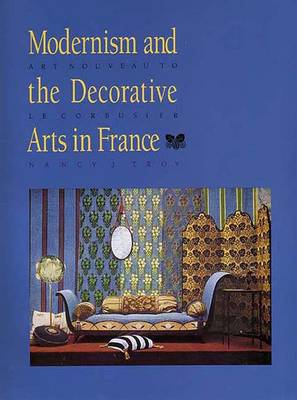In this book, Nancy J.Troy argues that the decorative arts are vitally important to understanding early 20th century modernism. She examines the effects of industrialization and international competition on the development of decorative arts in France during the period that began with Art Nouveau in 1895 and culminated in the Art Deco exhibition of 1925. Troy's book is a study of the French decorative arts from the fin-de-siecle to the flowering of Art Deco after world War I, and an investigation of Le Corbusier's interaction with French decorators during the 1910s. Troy begins by examining the transformation of Art Nouveau in Paris from a heterogeneous, international movement to a well-defined national style. She focuses on the social, economic, political and artistic circumstances that discouraged collaboration between French artists and industrialists, and contrasts this situation with the successful co-operative arrangements established by their German counterparts. Troy examines interventions in the decorative arts of Cubist artists including Andre Mare, Fernand Leger, Albert Gleizes, Jean Metzinger, and Raymond Duchamp-Villon.
She shows how the ideologically charged reception of the decorative arts affected the career of the pioneer architect of reinforced concrete, Auguste Perret. Troy also provides a revisionist account of the well-known anti-decorative stance of Le Corbusier, revealing the significance of his early work as an interior decorator with professional links to major Art Deco designers, and demonstrating that his polemical discussions on the relationship of art and industry were neither isolated nor idiosyncratic but instead deeply embedded in contemporary discourse.
- ISBN10 0300045549
- ISBN13 9780300045543
- Publish Date 27 March 1991
- Publish Status Out of Print
- Out of Print 4 April 2003
- Publish Country US
- Imprint Yale University Press
- Format Hardcover
- Pages 336
- Language English
